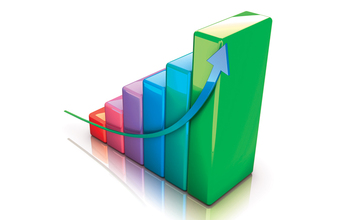
Aggregate new orders increased sharply in February, with growth little-changed from January's recent high.
The strong manufacturing sector expansion seen in India at the start of the year was maintained in February, with rates of growth for factory orders, exports and output holding close to January's recent highs. That said, while firms were willing to step up input buying, hiring activity increased only fractionally. Meanwhile, business sentiment faded on the back of concerns regarding the impact of the COVID-19 outbreak on exports and supply chains. At the same time, the rate of input cost inflation remained negligible in the context of historical data.
At 54.5 in February, the headline seasonally adjusted IHS Markit India Manufacturing PMI® held close to January's near eightyear high of 55.3. This signalled another robust improvement in operating conditions across the sector.
Manufacturing production increased at a similar pace to January's 91-month high, as firms reacted positively to new business gains and favourable market conditions. Growth was led by consumer goods makers, followed closely by intermediate goods producers.
Aggregate new orders increased sharply in February, with growth little-changed from January's recent high. Firms that reported higher sales commented on successful marketing campaigns, strengthening demand and supportive economic conditions.
February data showed that exports contributed to the expansion in total sales, with Indian companies noting the second strongest improvement in international demand for their goods since November 2018. There was a notable rise in new orders from abroad at consumer goods producers and modest gains in the intermediate and capital goods sectors.
Although manufacturers expect further increases in demand to support output growth in the year ahead, the degree of optimism weakened from January and was below its long-run average.
Survey members were particularly worried about the negative impacts of the coronavirus epidemic on exports and supply chains. The subdued mood restricted hiring activity in February, with the latest rise in jobs the weakest in three months and only fractional overall.
On the other hand, the solid expansion in input buying was maintained in February. Anecdotal evidence suggested that quantities of purchases increased due to a combination of robust sales growth and higher production needs. In turn, stocks of purchases continued to expand in February, with the pace of accumulation the quickest in close to three-and-a-half years. Conversely, holdings of finished goods declined as firms reportedly used their inventories to meet sales requirements. The rate of stock depletion remained sharp. On the price front, there was only a moderate increase in input costs, one that was negligible by historical standards. Subsequently, selling prices rose modestly. Finally, February data pointed to a general lack of pressure on the capacity of manufacturers and their suppliers, with vendor performance and backlogs increasing only fractionally.
Commenting on the latest survey results, Pollyanna de Lima, Principal Economist at IHS Markit, said: "Factories in India continued to benefit from strong order flows in February, from both the domestic and international markets. The pick-up in demand meant that companies were able to further lift production and input buying at historically-elevated rates. "However, alarm bells are ringing for Indian goods producers as the COVID-19 outbreak poses threats to exports and supply chains. Businesses became less confident about the year-ahead outlook for output, in turn restricting hiring activity. "Meanwhile, price data continued to highlight a lack of inflationary pressure in the sector. Only modest increases in input costs and output charges were recorded in February, a trend that has been a key theme of the manufacturing PMI survey for over a year."
© 2020 IHS Markit


























